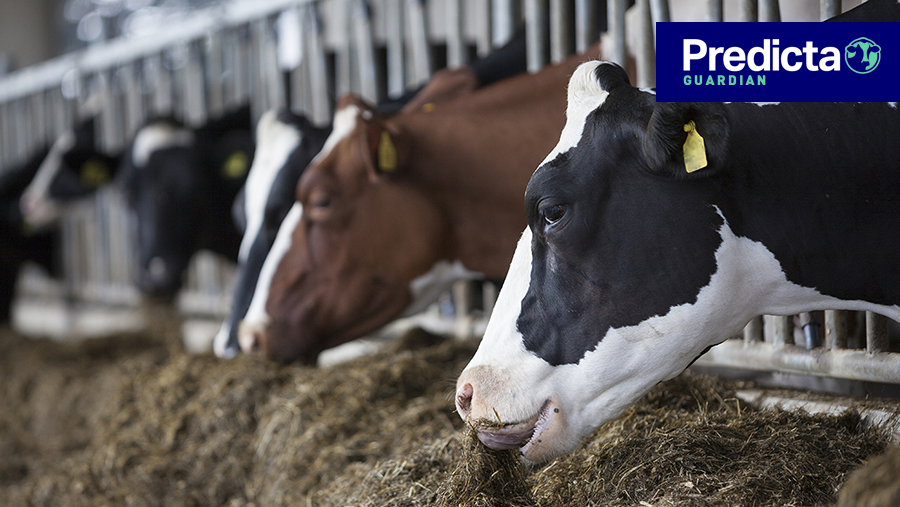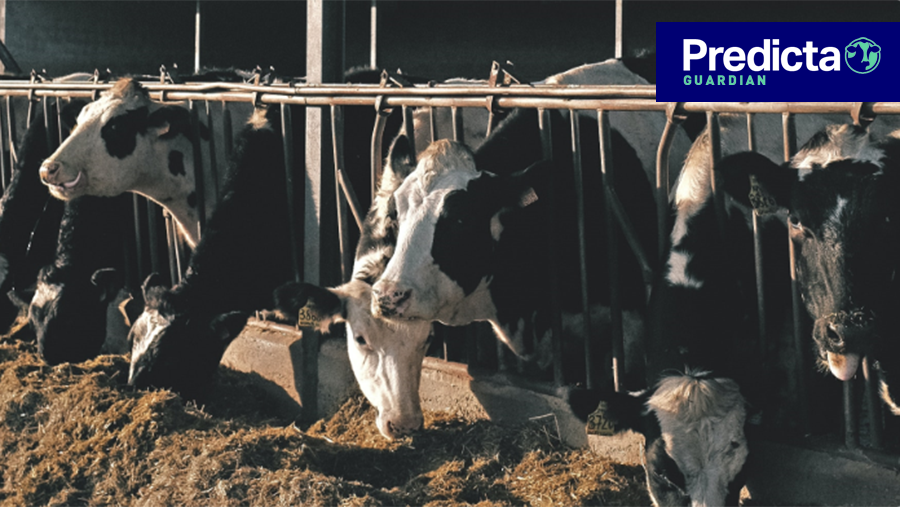Advertiser content
Let’s take a closer look at dry cow management
Is drying off a well-defined and flawlessly executed management task on your dairy farm? There’s no point in cutting corners if you wish to improve your dairy farm’s sustainability.
The dry period is an important period lasting on most farms between 40 and 60 days, that is designed to allow the dry cow to recover and prepare herself for the upcoming lactation.
Split in to two, nutrition and non-nutrition, adopting these management factors will help your dry cows achieve an optimum dry cow period.

Nutrition
- Feeding and ration; we’ll leave you to frequently review with your nutritional advisor and vet.
- However, the guidelines in the far-off period are for a ration with an energy density of around 9MJ/kg DM by feeding low quality forage and restricting to 100MJ/day and metabolizable protein (MP) 1,000g/day, whilst stepping energy up to 120MJ/day and 1,200g/day MP in the last three weeks.
- Maintain body condition; target BCS 3 to 3.25 for both drying off and calving.
- Check rumen fill, use a rumen fill score and target 4 or 5.
Non-nutrition
- Allow sufficient feed space: optimise feeding area design to maximise dry matter intake; provide at least 0.75m of feed space per cow.
- Clean out the troughs daily. Provide a smooth shiny surface in the feed trough improves intakes.
- Maintain correct feed barrier or rail position and height.
- Provide 10cm of water trough space per cow. Introduce more than one watering point in the dry cow group to reduce competition so that heifers and less dominant cows have easy access to water.
- Ensure cow comfort with soft bedded appropriately sized cubicles – lightly wider than for milking cows to accommodate heavily pregnant cows. For example, a 700kg dry cow should have a minimum of 127cm wide and 180cm long.
- Lying space in straw bedded yards should be 1.25m2 per 1,000 litres of milk production; a 10,000-litre cow will require 12.5m2 of lying space. Up to one third more space is also required for the feeding/loafing area.
- Minimise social stress whenever possible; if the herd is sufficiently large to split between far off and near to ensure the most accurate nutritional requirements, move the cows in small groups, rather than individually, between each group.

However good your management and animal health care during the dry cow period, there are some herd members who are always going to be more at risk to transition diseases than others.
That’s where Artificial Intelligence comes in. All dairy farmers now have access to PredictaGUARDIAN which connects to your current herd management software data, analyses milk recording or milk meter data along with reproduction data from a cow’s previous lactation to determine at and around dry off which are at risk for transition cow disease(s).
While early disease detection around calving and swift treatment is important, preventative treatment early in the dry period is even better to avoid irreversible damage and enable an uneventful lactation.
Enjoy the power of artificial intelligence, improve dairy farm sustainability, and take your farm potential to the next level.
Follow Predicta GUARDIAN by Dairy Data Warehouse to find out more.
References:
Dry cow nutrition for a successful transition into the milking herd (Farm Advisory Service Scotland (FAS)
Managing dry cow feeding (AHDB)
Provided by
At Dairy Data Warehouse (DDW), we unlock the full potential of data on dairy farms across the globe to enable the industry to harness big data and AI for sustainable and more profitable farming. DDW collects farm data from the herd management software and other sources on farm. We ensure high data quality by cleaning and transforming it into a unified, comparable set for AI driven strategic decision-making, benchmarking and insights. Our solutions support key stakeholders in nutrition, genetics, animal health, cow monitoring, and milking equipment. Let’s connect to explore how data can drive your business forward.
